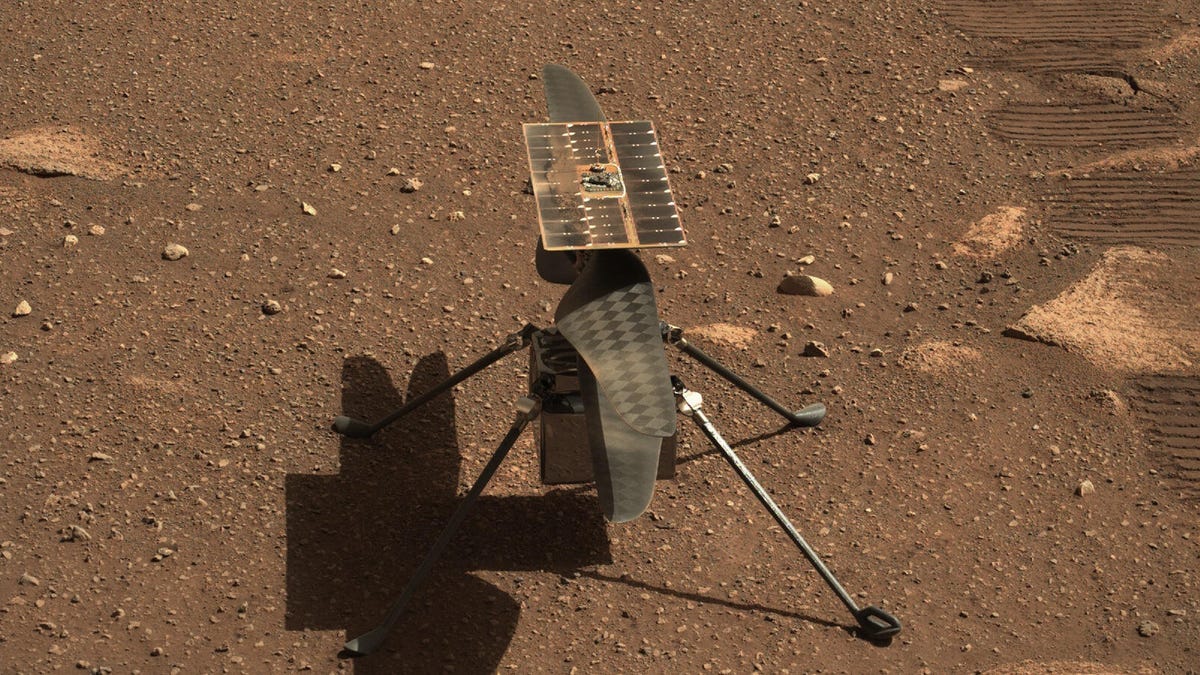NASA: Flying the Mars Ingenuity helicopter is 'getting harder and harder'
Ingenuity has outlasted its planned mission, and now Mars is throwing some obstacles into its flight path.
High-risk, high-reward. NASA's Mars helicopter gamble has paid off as Ingenuity continues to soar over the Martian landscape as a scout for the Perseverance rover. It's been a triumphant mission, but the helicopter's job is getting a lot tougher to perform.
Havard Grip, Ingenuity's chief pilot, talked about the challenges facing the chopper in a NASA status update this week. The density of the atmosphere in the Jezero Crater is dropping, a factor Grip said has "a significant impact on Ingenuity's ability to fly."
Atmospheric density -- which can fluctuate over time and with seasonal changes -- affects how much thrust Ingenuity needs to get off the ground and climb through the air. Lower density makes it harder to do these tasks. Even full-size helicopters on Earth must take atmospheric density into consideration. Ingenuity was optimized to work in an atmosphere on Mars that is about 1.2-1.5% of Earth's at sea level, but the rotorcraft has stuck around long enough to experience a change in conditions.
This doesn't mean Ingenuity will be grounded. "Thankfully, there is a way to tackle this issue, but it involves spinning the rotors even faster than we have been doing up to now," Grip said. "In fact, they will have to spin faster than we have ever attempted with Ingenuity or any of our test helicopters on Earth."
The plucky little rotorcraft is headed into uncharted territory as its team plans to test this speed-demon version of its rotors. NASA JPL said Ingenuity did a rotor spin test and could take off on its 14th flight as early as today. The flight will be short and will aim to show the chopper can handle lower atmospheric densities.
The #MarsHelicopter did a rotor spin test at 2,800 rpm. Next up – flight 14 – which will take place no earlier than Sept. 17. It will be a short hop to confirm rpm settings for future scouting efforts that could take place in lower atmospheric densities: https://t.co/DGF0eydImI pic.twitter.com/HjuG5CrMbM
— NASA JPL (@NASAJPL) September 17, 2021
These tests represent a short break from Ingenuity's recent work of flying over Mars and scouting the landscape to help the Perseverance team plan out the rover's explorations.
Grip warned of possible issues that could come with increased rotor speeds. The helicopter might experience aerodynamic drag that prevents flights, though Grip says this isn't expected to be a problem yet. The rotorcraft could also encounter vibrations that might damage its hardware.
The planned tests will be quite a workout for the chopper. "The motors will need to spin faster, the electrical system will need to deliver more power, and the entire rotor system will need to withstand the higher loads that come with increased rotor speeds," Grip said.
Ingenuity has a knack for overcoming challenges. It's made it through technical glitches and software updates and taken on increasingly more difficult flights. Here's hoping it soars right past this latest obstacle.


